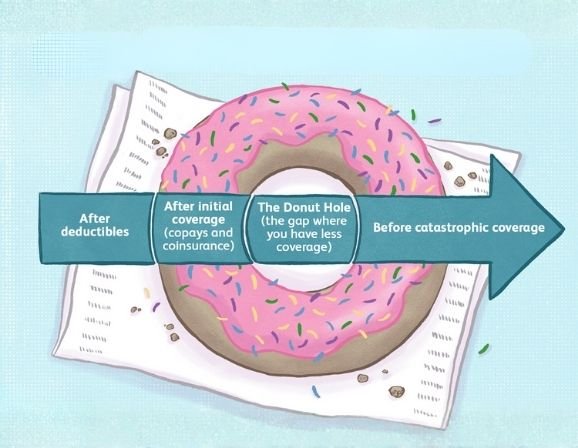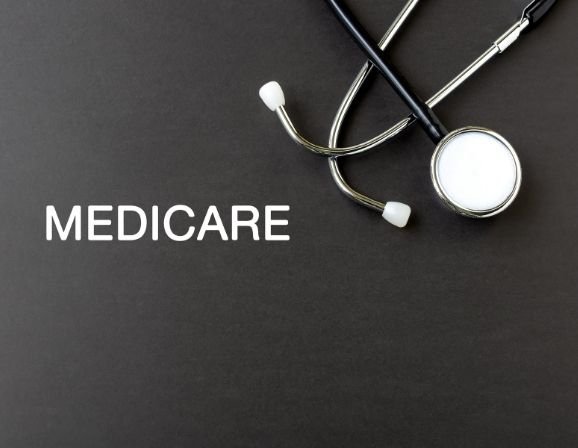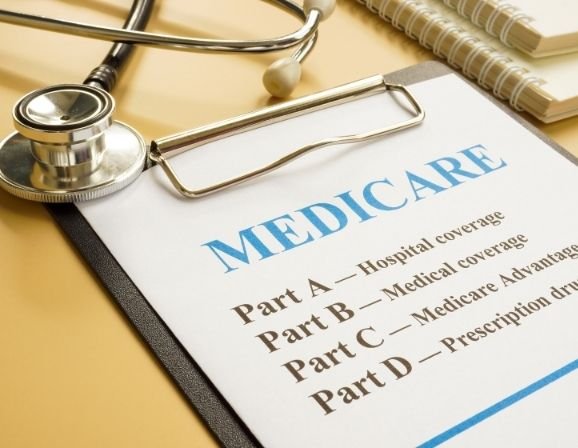When it’s time to plan for retirement or turn 65, one question often appears: should you stay on your employer or union prescription plan, or switch to Medicare? Understanding the real differences between Medicare Part D vs employer coverage is key to avoiding penalties and gaps in drug protection.
What Is Medicare Part D?
Medicare Part D is the prescription drug program run by private insurers under federal rules. It helps cover the cost of both brand-name and generic medicines. You pay a monthly premium, a deductible, and share costs through copays or coinsurance.
People can enroll in Part D as a standalone plan with Original Medicare or through a Medicare Advantage plan that includes drug coverage.
| Stay Covered Before Enrollment Ends Enroll through Prime Life Financial for expert help comparing Part D options this season. Enroll Now |
What Counts as Employer or Union Drug Coverage?
Employer and union coverage usually comes from a group health plan offered by your workplace or a retiree program. These plans may include medical, dental, vision, and prescription benefits bundled together.
When you retire, some employers or unions continue offering drug coverage through retiree health benefits or Employer Group Waiver Plans (EGWPs) designed to work with Medicare.
Employer Group Drug Plans vs Medicare Part D
Employer drug plans often look generous at first glance. They may cover more medications or have smaller copays. But not all of them meet Medicare’s “creditable coverage” standard.
If your plan pays at least as much as Medicare Part D on average, it’s considered creditable. That means you can delay enrolling in Part D without facing a penalty later. If it’s not creditable, you could face a lifelong surcharge when you join Part D later.
Understanding Creditable Drug Coverage

“Creditable coverage” means your employer or union plan meets or exceeds Medicare’s minimum standard for prescription benefits. Each fall, employers must send a Creditable Coverage Notice explaining whether their plan qualifies.
If your notice says non-creditable, you’ll need to sign up for Part D during your enrollment period to avoid late penalties.
Medicare Creditable Coverage Rules
Medicare’s creditable coverage rules state that you won’t owe a penalty if you keep other coverage that’s as good as or better than Part D. Once that coverage ends, you get a special enrollment period to join a drug plan without a fine.
This rule protects retirees with strong employer or union plans from paying twice for similar coverage.
Comparing Costs and Benefits
Employer and Medicare drug plans handle costs differently.
- Premiums: Employer plans often share premium costs between the company and worker; Part D premiums depend on the plan you choose and your income.
- Copays: Employer plans may have fixed copays, while Part D has tiers that change by medication type.
- Formularies: Each Part D plan has its own drug list. Employer plans may cover a wider range or use a single list for all employees.
- Network pharmacies: Part D plans use preferred pharmacies for discounts. Employer plans might partner with one national chain.
Your real savings depend on the drugs you take, where you fill prescriptions, and whether your employer still subsidizes premiums after retirement.
| Compare Plans Before You Retire Prime Life Financial helps you evaluate cost differences between employer drug plans and Medicare Part D. Get Help |
Retiree Health Benefits vs Medicare Part
Some retirees receive continued drug coverage from their former employer or union. These retiree health benefits may already coordinate with Medicare.
If the retiree plan is creditable, you can stay on it without penalties. If it’s not, you’ll need to join a Medicare Part D plan to maintain full prescription protection.
Union Retiree Drug Coverage Comparison
Unions often negotiate custom drug plans for members. Many use EGWP arrangements that combine employer funding with Medicare subsidies. These hybrid plans act as Medicare drug coverage but remain managed by your union or employer.
If you’re in a union plan, ask whether it’s creditable and how it works once you become Medicare-eligible.
When to Switch from Employer Coverage to Medicare Part D
Timing matters. You can join Part D when you first qualify for Medicare (the 7-month Initial Enrollment Period).
If you stay on employer coverage after turning 65, you can delay enrollment without penalty only if your current plan is creditable.
Once your employment or group coverage ends, you have 63 days to sign up for a Part D plan. Miss that 63-day window, and you’ll face the Medicare Part D penalty, a lifelong surcharge added to your monthly premium once you enroll later.
How Employer and Part D Plans Work Together
If you keep both employer coverage and Part D, the coordination rules decide who pays first.
- While you’re still working for an employer with 20 or more employees, your job plan usually pays first.
- When you retire, Medicare pays first, and your retiree plan becomes secondary.
- Some employer drug plans replace Part D entirely using an EGWP model subsidized by Medicare.
The exact setup depends on your employer’s policy. Always confirm before you enroll or drop any plan.
Impact of Income and Subsidies
Employer plans often use the same premium for all members, while Part D charges more if your income exceeds certain limits.
Medicare adds an Income-Related Monthly Adjustment Amount (IRMAA) to higher-earning beneficiaries. On the other hand, low-income individuals may qualify for Extra Help that reduces or removes premiums and copays.
Employer plans rarely adjust costs by income, so this is one of the biggest structural differences between the two systems.
Transitioning from Employer or Union Coverage to Medicare Part D
When retirement approaches, timing the switch correctly matters. Once your job or union coverage ends, you have a special enrollment period of 63 days to join a Medicare Part D plan without paying a late penalty. After that, a lifelong surcharge is added to your monthly premium.
People often assume that employer coverage automatically ends when they retire. It doesn’t. Some companies and unions keep retirees on a group plan, while others require you to transition to Medicare Part D. Always confirm your plan’s rules in writing before leaving work.
Switching from Employer Coverage to Medicare Part D
If your employer or union plan is ending, start the enrollment process before it officially stops. Doing so keeps you from losing prescription coverage even for a short period.
You can compare different Medicare Part D plans through a broker like Prime Life Financial to find one that best fits your medications and budget.
Avoiding Common Mistakes During the Transition
Here are some of the most frequent issues retirees face when moving from employer drug plans to Medicare Part D:
- Waiting too long after group coverage ends and missing the 63-day special enrollment window.
- Assuming union or employer retiree plans automatically count as creditable coverage.
- Failing to review updated drug lists (formularies) each year.
- Not checking if both medical and drug plans remain coordinated once you join Medicare.
| Plan Your Switch Early Prime Life Financial helps you transition smoothly from employer drug plans to Medicare Part D coverage without penalties. Start Today |
Employer Subsidies and EGWPs
Many large employers and unions use Employer Group Waiver Plans (EGWPs) to keep retirees covered. These plans combine employer funding with Medicare subsidies. In most cases, retirees keep a plan that looks like their old group coverage, but behind the scenes, it operates under Medicare Part D rules.
This hybrid setup allows employers to manage costs while keeping benefits stable for retirees. However, smaller companies may not offer this option, so it’s worth asking before you retire.
Which Option Saves You More
The right choice depends on several factors:
- How much your employer or union subsidizes your premiums.
- Whether your plan covers all your medications.
- If the plan remains creditable under Medicare’s definition.
- Your total annual drug spending and income level.
In many cases, staying on a creditable retiree plan costs less because the employer contributes. But if premiums rise or the plan stops being creditable, Medicare Part D can be cheaper long-term, especially with Extra Help or low-income subsidies.
How to Check Your Coverage Status
Each fall, you’ll receive a Creditable Coverage Notice from your employer or union. Keep it with your records. You’ll need this document if you ever enroll in Medicare Part D later.
If you’re unsure whether your coverage qualifies, contact your employer’s HR or benefits department. You can also speak with a licensed Medicare advisor to confirm before taking any action.
| Don’t Lose Your Coverage Window Contact Prime Life Financial to confirm your creditable status and plan your next step with confidence. Call Now |
Choosing Between Employer and Medicare Coverage

If your employer or union plan remains affordable and creditable, it might make sense to keep it. But if it’s expensive, limited, or about to end, switching to Medicare Part D offers stable, federally backed coverage with no dependence on an employer’s budget.
Remember that each year brings open enrollment, so you can always reassess your needs and switch if circumstances change.
The Bottom Line
Choosing between Medicare Part D vs employer coverage comes down to cost, creditable status, and timing. Employer or union plans can offer strong retiree health benefits, but they must meet Medicare’s minimum standards.
Failing to confirm that status or missing your enrollment window could mean paying higher premiums for life.
Prime Life Financial helps simplify this decision by comparing your existing plan with available Medicare Part D options, so you can retire with confidence and no coverage gaps.
FAQs
How does Part D work with employer insurance?
If you still work for a company with 20 or more employees, your employer plan usually pays first, and Part D acts as secondary. After retirement, Medicare typically becomes primary.
What is the difference between Medicare Part D and EGWP?
An EGWP is a group plan that employers or unions set up to work with Medicare Part D. It follows the same coverage rules but is customized and partly funded by the employer.
Which is better, Medicare or employer insurance?
It depends on premium costs, drug lists, and whether your employer coverage is creditable. Many retirees find Medicare Part D more flexible once they leave full-time work.
Are you eligible for Medicare but receive drug coverage from a former employer or union?
Yes, but confirm each year that your retiree or union plan remains creditable. If it ever stops meeting Part D standards, enroll in Medicare Part D within 63 days to avoid penalties.






